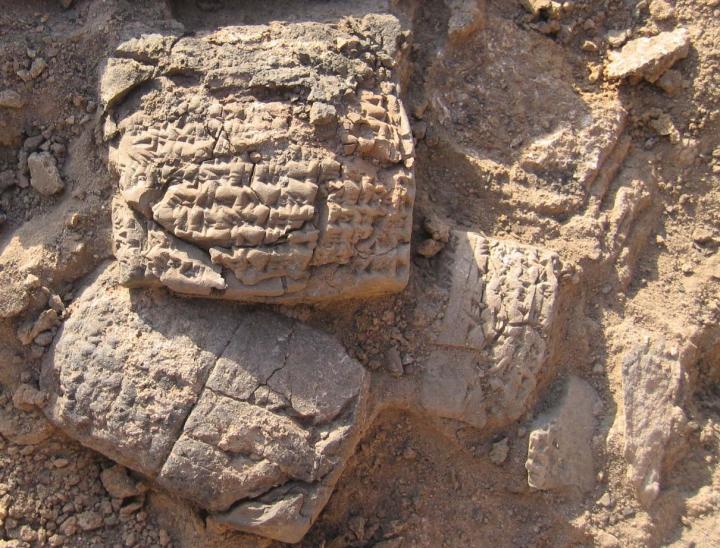Johannes Gutenberg University Mainz und Mainz University of Applied Sciences are digitizing 3,500-year old cuneiform texts

Credit: photo/©: Dr. Behzad Mofidi-Nasrabadi
Archaeologist Dr. Behzad Mofidi-Nasrabadi of Johannes Gutenberg University Mainz (JGU) excavated cuneiform texts on clay tablets at Haft Tappeh, dating back to the middle of the second millennium B.C. and decipherable only by a handful of experts around the world. The site of Haft Tappeh lies in southwestern Iran and was once the city of Kabnak in the Elamite kingdom. A total of about 1,400 cuneiform texts and fragments in the Akkadian language have been uncovered to date. Thanks to funding by the German Research Foundation (DFG) to the tune of EUR 500,000, a project is underway to digitally process the texts and make them available to the public online. The three-year project started in September 2019 and is as a cooperation of a team headed by Professor Doris Prechel, Professor Ancient Near Eastern Philology at the JGU Department of Ancient Studies and another group headed by Professor Kai-Christian Bruhn from the Institute for Spatial Information and Surveying Technology (i3mainz) at Mainz University of Applied Sciences, who is also Director of the Mainz Center for Digitality in the Humanities and Cultural Studies (mainzed). “Cuneiform is a highly complex writing system which, including all its variants, encompasses more than 10,000 characters,” explained Professor Doris Prechel. “An automated system for reading these texts has yet to be developed.”
The project will first focus on the transcription of around 500 original texts. They will also be provided with scholarly annotations and edited so that they can be made available to the academic community through the Internet. To do this, the researchers at Mainz will use digital 3D-objects of the clay tablets that have been created with the aid of high-resolution scanners in a previous project. “Now we aim to provide already ongoing projects involved in the evaluation of these 3D models with high-quality data,” said Professor Kai-Christian Bruhn. “And we want to ensure that the data we generate can be easily integrated into existing cuneiform portals or those currently under construction such as the Cuneiform Digital Library Initiative of the University of California in Los Angeles.” Finally, the researchers will also address the computer linguistic analysis of cuneiform: “Towards the end of the project we hope to have generated data that will help us explain various language- and script-related aspects of these texts. This will also involve identifying how much more we need to do before automated translation of cuneiform text is possible,” said Bruhn. He and Prechel have been working together for several years in various joint projects sponsored by Mainz University of Applied Sciences and JGU. Besides their involvement in the Rhine-Main Archaeology Association (Verbund Archäologie Rhein-Main – VARM) and the Digital Humanities in the RMU Network (DH-RMU), they are also affiliated with mainzed and, among other things, teach in the interuniversity Master’s degree program “Digital Methods in the Humanities and Cultural Studies.”
Building on a pilot project with Helmholtz Institute Mainz
In the earlier pilot project, where digital images of the cuneiform texts were recorded using 3D scanners, Professor Doris Prechel cooperated with nuclear physicist Professor Frank Maas, founding director of the Helmholtz Institute Mainz (HIM). The idea for this collaboration came about through their mutual work on the Executive Committee of the Gutenberg Research College (GRC), the central organization supporting top-level research at JGU. “It was the result of meetings at events we attended together,” Prechel remembered. “When you work on a committee together for six years, you get to know colleagues from completely different disciplines.” Prechel and Maas plan follow-up projects in which they will not only digitize the texts from Haft Tappeh, but whole collections of archaeological objects, such as pottery sherds. Furthermore, the JGU Ancient Near Eastern Philology section, HIM, and i3mainz are currently planning various collaborative projects supporting young academics.
###
Media Contact
Dr. Doris Prechel
[email protected]
49-613-139-38320
Original Source
https:/




